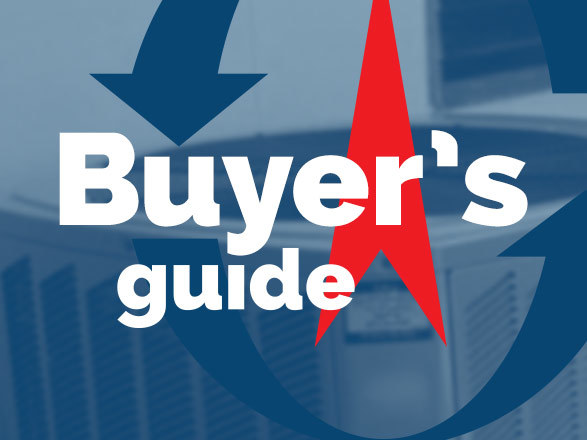How Much Does it Cost to Install a Whole-Home Dehumidifier in Florida?
June 08, 2018

Interested in combating Florida’s high humidity levels with a whole-home dehumidifier?
If so, you’re probably wondering about price.
Well, the cost to install a whole-home dehumidifier in Fort Myers ranges from $1,500 to $2,800+.
But what you’ll actually pay in that range depends on the following factors:
- The capacity of the unit
- Drainage options
- Installation considerations
Let’s go into more detail about each of these cost factors...
Want a quote today?
Cost factor #1: The capacity of the unit
When we talk about dehumidifier capacity, we’re talking about how many pints of water a particular unit can remove from the air during a 24-hour period.
The more pints of water a dehumidifier can remove, the more expensive it will be. Most residential whole-home dehumidifiers can remove anywhere from 10 to 44 pints.
So how do you know what capacity dehumidifier you need?
Well, it depends on 2 things:
- The size of your home (square footage)
- Pre-existing conditions in your home
The size of your home is self-explanatory, but what are the “conditions” we’re talking about?
Well, these conditions include…
- The climate: Homes in humid climates (like Florida) are more prone to high indoor humidity levels, which means they’ll need higher-capacity dehumidifiers than homes in dryer climates.
- The quality of your home’s insulation: Well-insulated homes typically have lower humidity than poorly insulated homes, which means well-insulated homes need lower-capacity dehumidifiers than poorly-insulated homes.
- The state of your HVAC system: Your air conditioner actually removes humidity from your home. But if it’s in poor shape (10+ years old, or hasn’t been maintained regularly), it won’t dehumidify your home’s air very well, which raises indoor humidity and means you’d need a higher-capacity dehumidifier.
Still not sure what size/capacity dehumidifier you need?
Just use the chart and directions below.

Source: www.energystar.gov
How to read the chart:
Step 1: Determine the level of humidity that best matches your home (moderately damp, very damp, wet, etc.)
Step 2: Match your home’s humidity level with your home’s square footage (columns to the right). Note: Since we have high humidity here in Florida, many homeowners fall into the “very damp” or “wet” categories.
Step 3: The number that intersects with the level of humidity and square footage tells you what capacity dehumidifier you need (# of pints of moisture the dehumidifier needs to remove from the home).
For example, if you have a poorly insulated Florida home that’s roughly 1,500 sq/ft and matches the “wet” condition, you would need a dehumidifier that can remove up to 26 pints of moisture from your home in a 24-hour period.
While the above chart is helpful for providing a good estimate, you’ll want to contact a professional to look at your home’s conditions and relative humidity levels to determine what capacity you need for your whole-home dehumidifier.
Cost factor #2: Drainage options
Dehumidifiers need to get rid of all the condensate (moisture) they collect from humid air and most whole-home units do that in 1 of 2 ways:
Gravity-assisted drainage (less expensive): This drainage option is the most commonly used in Florida and will probably work fine for your home (if your AC is located upstairs or in the attic). Gravity-assisted dehumidifiers, like their name suggests, work with gravity to draw condensate through a tube that runs outside or into a drain.
- Pumps (more expensive): If your whole-home dehumidifier has to fight against gravity (i.e. your AC is in the basement or the dehumidifier needs to be installed in the basement), then it may need a pump to help move water out of the system. Some units come with an internal pump that pushes the water up the drainage tube; others require that you install an external pump to remove the condensate.
Cost factor #3: Installation considerations
The following installation considerations will affect how much you pay for a whole-home dehumidifier:
• Adding a designated outlet
If your home doesn’t have a 3-prong 115V outlet close enough to power the dehumidifier, you’ll need to have one professionally installed. Installing a 115V outlet can add anywhere from $150 to $300 to the total cost.
• Adding a return duct
Some dehumidifiers require their own dedicated return vent (the vent that sucks in humid/hot air to be dehumidified/cooled).
If your whole-home dehumidifier requires a dedicated return duct, it will likely increase the total cost of installation because of additional labor and materials.
Note: If you do need to install a return duct, your HVAC professional may also have to make adjustments to other parts of your ductwork to maintain proper pressure levels in the system.
• Difficulty of access to HVAC system
If your HVAC system is located in a crawlspace or in a difficult-to-reach area, then the cost of labor will increase because the installation will take longer.
• The contractor you hire
Who you hire to install your dehumidifier will also affect the total cost of the project.
You see, not all contractors charge the same for their services—more experienced, top-quality contractors typically charge more than inexperienced contractors.
But don’t be deterred by a higher price. When in comes to installing a dehumidifier, you get what you pay for. So if you opt for an experienced contractor, you’ll get high-quality service which saves you money and hassle down the road.
How do you know if a contractor is experienced and top-quality?
Well, an experienced contractor will…
Have good online customer reviews (on sites like Yelp, Better Business Bureau and Facebook)
Be licensed and insured
Provide upfront and honest pricing
Need a whole-home dehumidifier for your Fort Myers home?
We offer…
100% customer satisfaction—always
Honest, upfront pricing (no surprises)
Punctuality (if we’re late, we waive 100% of your diagnostic fee)
Respectful service
- Posted in:
- Air Quality

